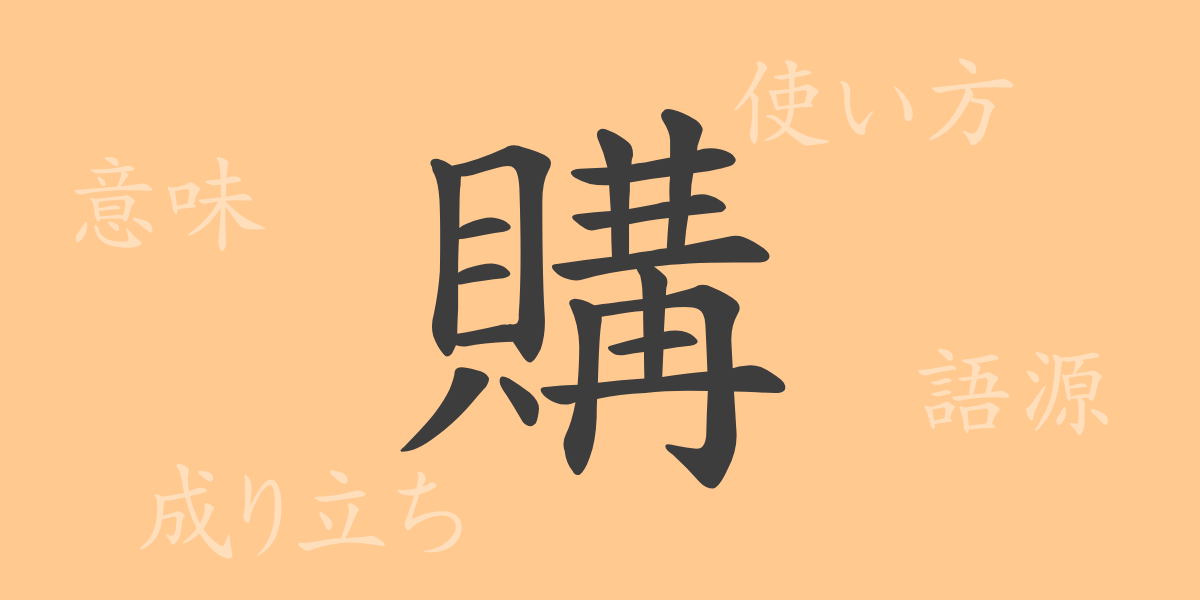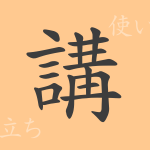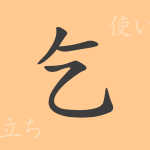Common-use kanji play a significant role in symbolizing the beauty and complexity of the Japanese language. Among them, the kanji “購(こう)” is deeply rooted in our daily lives, being used in various contexts ranging from economic activities to cultural expressions. This article explores the depth of meaning and usage of the kanji “購(こう).”
Origins of 購(こう)
The kanji “購(こう)” is a logogram derived from ancient Chinese pictographs. It features the radical “貝(かい)” which symbolizes shell currency, representing wealth or transactions. Additionally, “勾(こう)” comes from “勹(つつむ),” indicating the action of wrapping or encompassing something. Therefore, “購(こう)” essentially signifies the act of obtaining something in exchange for wealth, meaning “to buy.”
Meanings and Uses of 購(こう)
The kanji “購(こう)” is primarily used to mean “to buy” or “to purchase.” It is frequently seen in economic contexts, referring to the act of exchanging money for goods or services. This kanji is indispensable in the business world, appearing in various documents and advertisements related to commerce.
Readings, Stroke Count, and Radical of 購(こう)
The kanji “購(こう)” has specific readings and characteristics:
- Readings: On’yomi (音読み) is “コウ”; there is no Kun’yomi (訓読み).
- Stroke count: “購(こう)” has a total of 17 strokes.
- Radical: The radical is “貝(かい),” representing shell currency.
Idioms, Phrases, and Proverbs Using 購(こう)
Idioms and phrases containing “購(こう)” are often related to economics and transactions. For example, “購読(こうどく)” means to subscribe to a newspaper or magazine regularly, “購入(こうにゅう)” means to purchase something, and “購買(こうばい)” refers to the act of buying goods or the place where goods are purchased. These expressions are commonly used in everyday life and business settings.
Conclusion on 購(こう)
The kanji “購(こう)” represents the fundamental concept of purchasing in economic activities, maintaining its importance in modern society. Understanding and correctly using this kanji allows for richer Japanese expression. As a common-use kanji in Japan, “購(こう)” remains a vital part of our language, reflecting the history and culture that continue to live within our words.

























